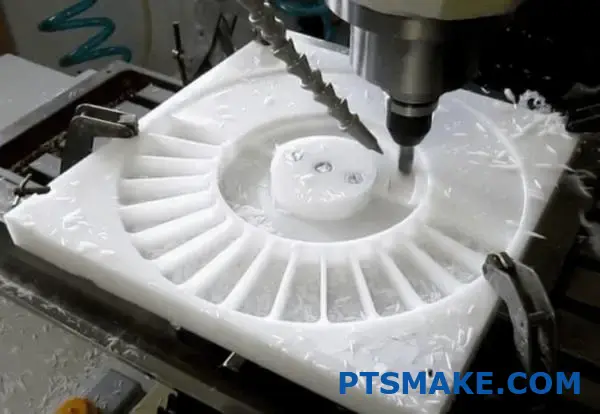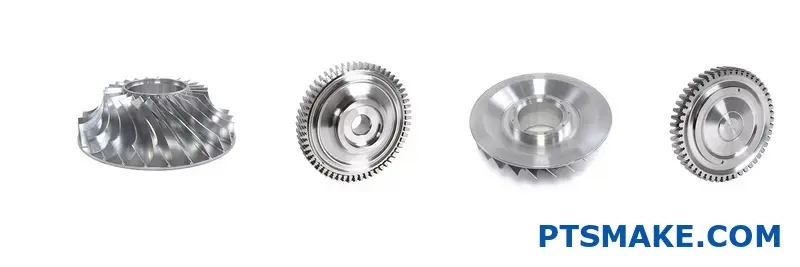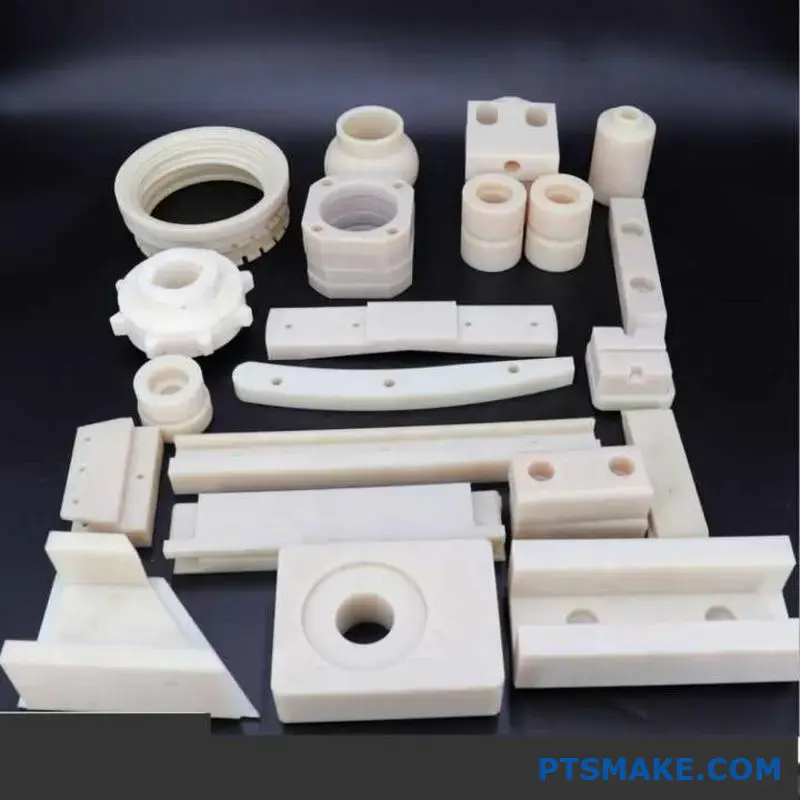Types Of Stainless Steel Buttons For Industrial Applications
Ever wondered why those tiny metallic components in industrial machinery never seem to rust or fail? The secret lies in the precision-engineered stainless steel buttons that silently power our manufacturing world.
Stainless steel buttons are essential components in industrial applications, offering durability, corrosion resistance, and reliability in demanding environments. From control panels to emergency stops, these versatile components provide consistent performance across various sectors.
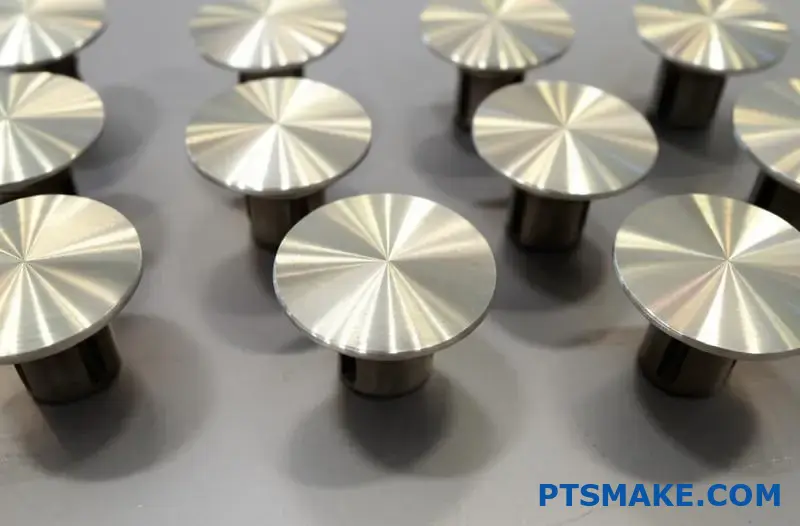
When it comes to industrial applications, choosing the right stainless steel button can make a significant difference in operational efficiency, safety, and equipment longevity. At PTSMAKE, I’ve observed that many engineers and procurement specialists often overlook the importance of these seemingly simple components. However, the right button selection can prevent costly downtime and improve operator experience.
Key Types of Stainless Steel Buttons for Industrial Use
LED Illuminated Stainless Steel Buttons
LED illuminated stainless steel buttons combine durability with visual feedback, making them ideal for operator interfaces in industrial environments. These buttons typically come in two popular sizes:
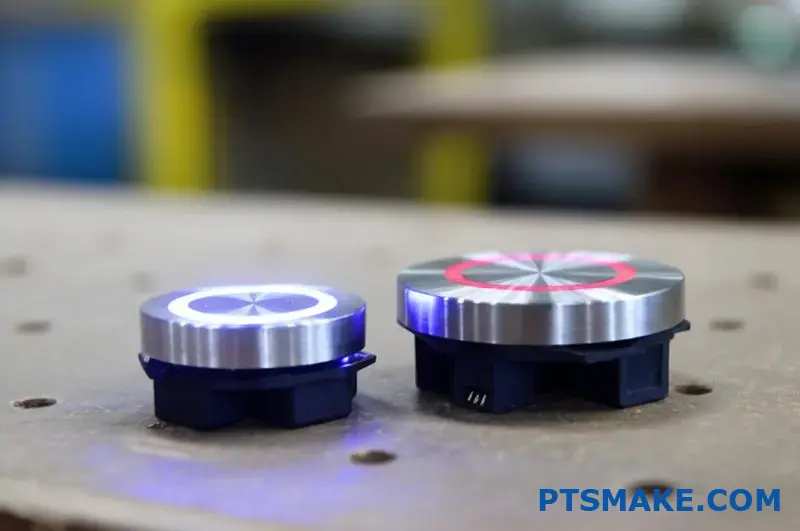
25mm LED Illuminated Buttons
The 25mm variant offers excellent visibility and a substantial tactile feel, making it perfect for primary control functions. These larger buttons feature:
- Enhanced visibility across factory floors
- Resistance to vibration in heavy machinery
- Multi-color LED options for status indication
- IP65 or higher protection ratings for dust and moisture resistance
Our manufacturing team typically recommends these for main operator stations where clear visual confirmation is essential, such as in production line control panels or CNC machine interfaces.
16mm LED Illuminated Buttons
For applications where space is limited but reliability cannot be compromised, 16mm LED buttons provide an excellent solution:
- Compact footprint for high-density control panels
- Reduced actuation force compared to larger variants
- Same environmental protection standards as their larger counterparts
- Ideal for secondary functions or space-constrained applications
Touchless Infrared Stainless Steel Buttons
The industrial world has been revolutionized by touchless technology, particularly in hygiene-critical environments1 where cross-contamination is a concern.

These innovative buttons operate through infrared sensors that detect hand proximity, eliminating physical contact. Key features include:
- Detection ranges typically between 5-15cm
- Adjustable sensitivity for different operating environments
- Visual and/or audible feedback upon activation
- Significantly increased lifespan due to absence of mechanical wear
When we implemented these in a client’s food processing facility, they reported a 30% reduction in maintenance costs and improved sanitation compliance.
Button Head Socket Cap Screws
While not buttons in the traditional sense, button head socket cap screws represent another crucial category of stainless steel "buttons" in industrial applications:
| Feature | Benefit | Common Application |
|---|---|---|
| Low-profile head | Reduced snagging hazard | Safety equipment |
| Hexagonal socket | Tamper resistance | Public installations |
| Various thread patterns | Application versatility | Machinery assembly |
| 316 grade stainless options | Enhanced corrosion resistance | Marine environments |
These components often serve dual purposes as both fasteners and interface elements, particularly in equipment where operator adjustments are occasionally required.
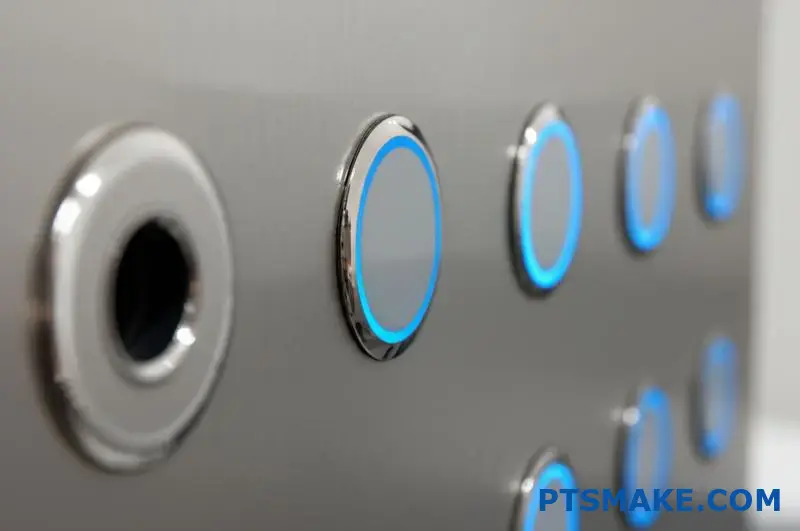
Material Considerations for Industrial Buttons
The performance of stainless steel buttons largely depends on the specific alloy used. The most common grades include:
304 Stainless Steel Buttons
This is the workhorse of industrial button materials, offering:
- Excellent corrosion resistance in standard environments
- Good mechanical properties at reasonable cost
- Reliable performance in temperatures ranging from -50°C to 250°C
- Non-magnetic properties (when properly annealed)
316 Stainless Steel Buttons
For more demanding applications, particularly those involving chemical exposure or marine environments:
- Superior resistance to chloride environments
- Enhanced corrosion resistance due to molybdenum content
- Slightly higher cost justified by extended lifespan
- Preferred choice for outdoor control systems
430 Stainless Steel Buttons
Sometimes used for less demanding applications:
- Magnetic properties (useful for specific sensing applications)
- More economical than 304 or 316 grades
- Adequate corrosion resistance for indoor, controlled environments
- Slightly less ductile than austenitic grades
Selection Criteria for Industrial Applications
When helping clients select the appropriate stainless steel buttons for their applications, I consider several factors:
- Environmental exposure – temperature extremes, chemical presence, salt exposure
- Operational frequency – how often the button will be actuated during its service life
- Feedback requirements – whether visual, tactile, or auditory confirmation is needed
- Integration with existing systems – mounting considerations and electrical compatibility
- Safety classification requirements – whether intrinsically safe versions are needed for hazardous environments
The right button not only performs its primary function reliably but also enhances operator confidence and system safety throughout the equipment’s operational life.
Benefits Of LED Illuminated Stainless Steel Buttons
Have you ever noticed how a single glowing button can transform an ordinary interface into something that feels high-tech and intuitive? LED illuminated stainless steel buttons are revolutionizing how we interact with everything from elevators to industrial machinery.
LED illuminated stainless steel buttons combine durability with visual feedback, creating more intuitive user experiences across multiple applications. Their bright, customizable illumination draws attention to critical functions while withstanding harsh environments that would damage conventional buttons.
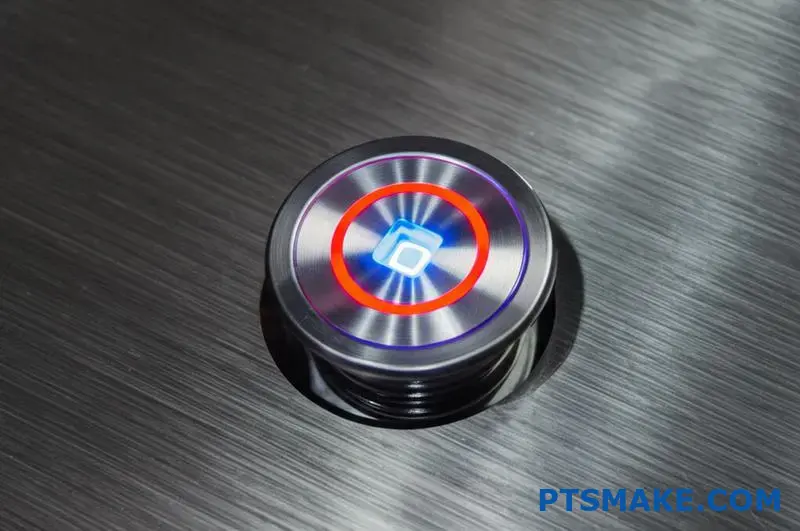
How LED Illumination Enhances Stainless Steel Buttons
LED technology has transformed the humble stainless steel button into a powerful communication tool. These illuminated components offer substantial benefits over their non-illuminated counterparts, creating more effective interfaces for users across various environments.
Vibrant Multi-Color Illumination Options
One of the most compelling advantages of LED stainless steel buttons is their ability to communicate through color. Modern LED buttons offer remarkable versatility with multiple illumination options:
| Color | Typical Usage | Psychological Impact |
|---|---|---|
| Blue | Processing/water systems | Calming, trustworthy |
| White | General functions | Clean, neutral, modern |
| Green | Start/go/operational | Safety, permission |
| Orange | Warning/standby | Caution, attention |
| Red | Stop/emergency/critical | Danger, urgency |
This color versatility transforms simple buttons into intuitive signaling devices2 that convey information instantly, even before reading any accompanying text.
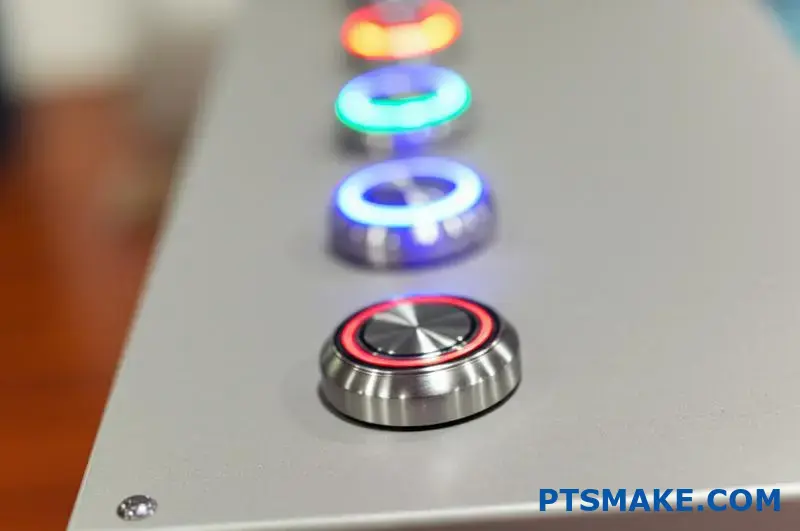
Enhanced Visibility in Challenging Environments
Working with manufacturing clients at PTSMAKE has shown me that button visibility can be crucial in industrial settings. LED illuminated stainless steel buttons excel in:
- Low-light conditions such as utility rooms or night operations
- Visually cluttered environments with competing visual information
- Situations requiring quick identification of control points
- Areas where ambient lighting may change throughout the day
The directional illumination cuts through visual noise, ensuring operators can quickly locate critical controls even in less-than-ideal conditions.
Creating Interactive Digital Signage Experiences
The integration of LED illuminated stainless steel buttons has revolutionized digital signage by adding an interactive dimension. These components help transform passive displays into engaging experiences by:
- Providing physical interaction points within digital environments
- Offering tactile feedback that touchscreens cannot replicate
- Creating durability at high-traffic interaction points
- Maintaining functionality even with gloved hands or in wet conditions
For wayfinding kiosks and public information displays, these buttons strike the perfect balance between digital sophistication and physical reliability.

Power Efficiency and Extended Lifespan
Modern LED technology offers remarkable efficiency compared to older illumination methods:
- Typical power consumption of just 20-100mW per button
- Operational lifespans exceeding 50,000 hours (nearly 6 years of continuous use)
- Minimal heat generation, reducing thermal stress on surrounding components
- No filaments to break or bulbs to replace
This efficiency translates to reduced energy costs and maintenance requirements over the installation lifetime, particularly important for large-scale implementations with dozens or hundreds of buttons.
Weather and Vandal Resistance
When properly designed, LED stainless steel buttons offer exceptional durability in challenging environments:
Outdoor Applications
- UV-resistant construction prevents fading or yellowing of illuminated elements
- Sealed designs with ratings up to IP68 for complete dust and water immersion protection
- Operating temperature ranges from -40°C to +85°C in premium models
- Corrosion resistance from marine-grade stainless steel options
Security Considerations
- Anti-vandal designs with tamper-resistant mounting options
- Impact resistance exceeding IK10 ratings (20 joules impact)
- Scratch-resistant surface treatments
- Theft-deterrent construction requiring specialized tools for removal
These durability features make LED stainless steel buttons ideal for unsupervised public installations from parking garages to transit systems.

Design Flexibility and Aesthetic Appeal
Beyond pure functionality, the aesthetic qualities of LED illuminated stainless steel buttons contribute significantly to overall product design:
- Brushed, polished, or custom-textured finishes complement modern industrial design
- Illuminated symbols or text can replace separate labels for cleaner interfaces
- Halo lighting effects create sophisticated visual cues without overwhelming brightness
- Seamless integration with both contemporary and industrial design aesthetics
At PTSMAKE, we’ve helped designers integrate these buttons into products ranging from high-end commercial espresso machines to industrial control systems, where their visual appeal enhances brand perception while delivering reliable functionality.
Accessibility Improvements
LED illuminated buttons also offer significant advantages for universal design and accessibility:
- High-contrast illumination helps users with visual impairments
- Tactile feedback benefits those with limited touchscreen capability
- Configurable brightness accommodates various visual sensitivity needs
- Audible feedback options can be paired with visual indicators
These accessibility features help ensure that interfaces remain usable for the widest possible range of users, an increasingly important consideration in public-facing installations.
Selecting The Right Size For Your Project
Ever wonder why some buttons just feel ‘right’ when you press them, while others seem awkwardly sized? The secret lies in proper dimensioning—a critical factor that can make or break your project’s usability and professional appearance.
Choosing the correct button size is crucial for balancing functionality, ergonomics, and aesthetics in any application. Whether you’re designing a control panel or building machinery, understanding size implications ensures optimal user interaction and seamless integration with your overall design.
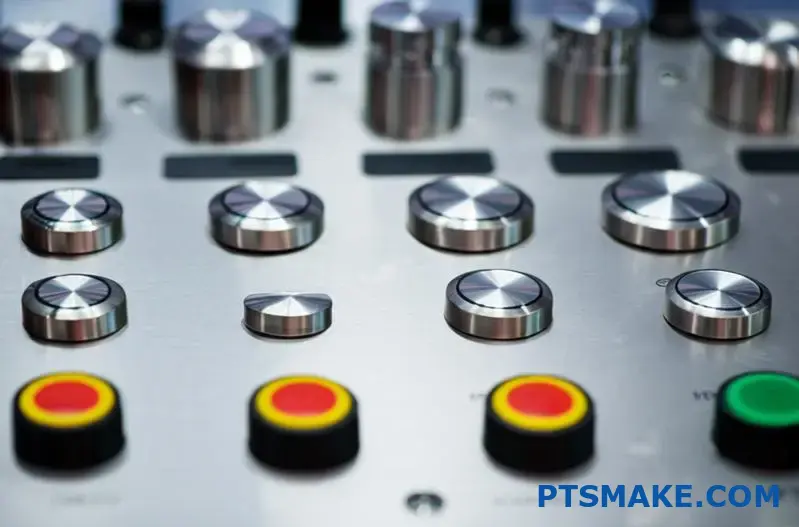
Understanding Button Size Specifications
When selecting stainless steel buttons for your project, size isn’t just about aesthetics—it directly impacts functionality, accessibility, and user experience. At PTSMAKE, I’ve guided countless clients through this decision process, and I’ve found that understanding the nuances between different sizes can significantly impact project outcomes.
The Critical Difference Between 25mm and 16mm Buttons
The two most common stainless steel button sizes in industrial applications are 25mm and 16mm, each serving distinct purposes and environments.
25mm Stainless Steel Buttons: Maximum Visibility and Accessibility
The 25mm button represents the gold standard for applications where visibility and ease of use are paramount. These larger format buttons offer several advantages:
- Increased surface area makes them easier to locate and press, even with gloved hands
- Greater internal space allows for more complex switching mechanisms and feedback systems
- Enhanced visibility from a distance, critical in industrial environments
- Better suited for applications requiring emergency stops or frequently used controls
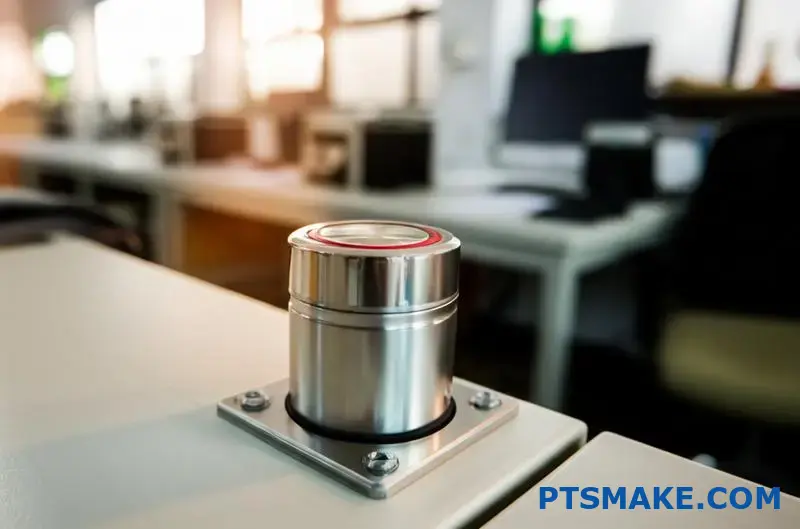
When implementing control systems for manufacturing clients, I typically recommend 25mm buttons for primary functions that need immediate recognition—start/stop controls, emergency functions, or any operation where split-second identification matters.
16mm Stainless Steel Buttons: Compact Efficiency
The 16mm variant offers a more space-efficient solution without significantly compromising usability:
- Ideal for control panels with multiple functions where space is limited
- Perfect for secondary or less frequently used controls
- Maintains professional appearance while reducing footprint by nearly 60%
- Works well in sequences or arrays of related controls
These compact buttons excel in applications like test equipment, laboratory instruments, or specialized machinery where multiple functions must be accessible within a limited space.
Finding the Right Balance: Mixed Size Implementations
Many successful designs incorporate both sizes strategically. Consider this approach for complex control systems:
| Button Size | Recommended Use | Application Example |
|---|---|---|
| 25mm | Primary functions | Start/Stop, Emergency, Mode selection |
| 25mm | Safety-critical operations | Emergency stop, override controls |
| 16mm | Secondary functions | Parameter adjustments, menu navigation |
| 16mm | Infrequently used controls | Maintenance functions, special operations |
This hierarchical approach creates an intuitive interface that naturally guides users to the most important functions while maintaining access to all necessary controls.
Socket Cap Screw Dimensions: The Unsung Heroes
Button head socket cap screws represent another critical dimension consideration in many projects. These components serve dual purposes—securing assemblies while providing a finished, button-like appearance.

Key Dimensional Considerations for Socket Cap Screws
When selecting socket cap screws for your application, several dimensional factors come into play:
Head Diameter to Thread Ratio
This ratio determines both the aesthetic appearance and functional strength of the installation. The typical ratio ranges between 1.5:1 and 2:1, meaning a 10mm thread might have a 15-20mm button head. This ratio ensures:
- Sufficient surface area for tool engagement
- Appropriate distribution of clamping force
- Balanced visual proportions
- Adequate clearance for assembly and operation
Thread Pitch Selection
Thread pitch—the distance between adjacent threads—significantly impacts both assembly characteristics and long-term reliability:
- Fine pitches (smaller distance between threads) provide higher clamping force and better vibration resistance
- Coarse pitches (larger distance) allow faster assembly and better performance in materials prone to galling
- Specialized pitches exist for specific applications like thin materials or plastic components
The optimal pitch depends on your specific material, loading conditions, and assembly requirements.
Application-Specific Sizing Guidelines
Through my work at PTSMAKE, I’ve developed these practical guidelines for specific applications:
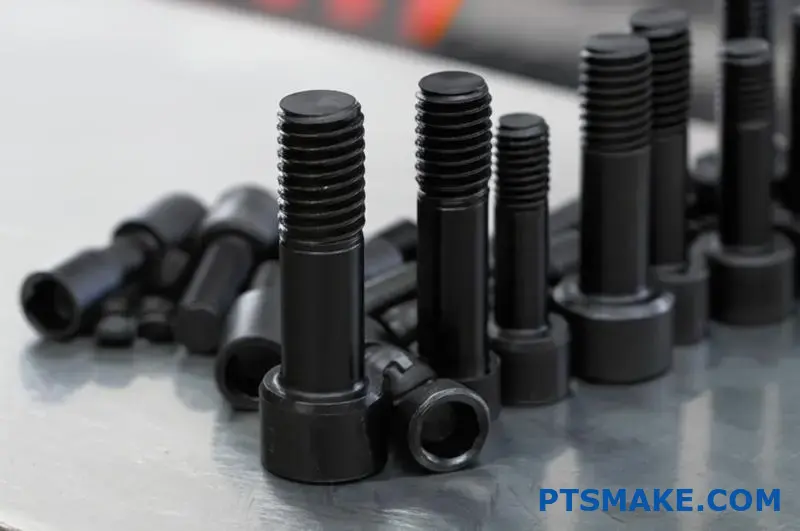
Control Panel Installations
For control panels where stainless steel buttons must maintain a waterproof seal3 against the panel:
- Allow minimum 1.5x button diameter spacing between adjacent buttons
- Ensure panel thickness falls within the button’s specified mounting range
- Consider IP rating requirements when determining gasket compression needs
- Account for behind-panel clearance for terminals and connectors
Mobile Equipment Applications
For buttons installed on equipment subject to movement and vibration:
- Select larger (25mm) formats for primary operator controls
- Ensure button travel distance accommodates vibration without false triggers
- Consider using threaded body buttons with locking nuts rather than snap-fit varieties
- Implement protective guards or recessed mounting for buttons in vulnerable positions
Architectural and Public-Facing Installations
For buttons installed in public spaces where aesthetics and vandal resistance are concerns:
- Choose flush-mounted designs to minimize protrusion
- Select anti-tamper variants with specialized mounting hardware
- Consider the visual impact of different button diameters on the overall design
- Ensure accessibility compliance with relevant standards (typically favoring 25mm designs)
Ergonomic Considerations in Button Sizing
While technical specifications are important, the human factors of button design ultimately determine usability. The relationship between button size and human ergonomics follows several principles:
- Larger buttons (25mm) require less precise finger placement, reducing operational errors
- Smaller buttons (16mm) allow more functions within a natural hand span without repositioning
- Button spacing should increase proportionally with button size to maintain clear visual and tactile separation
- Critical or emergency functions benefit from increased size differentiation from standard controls
These ergonomic considerations should guide your size selection process alongside technical requirements. When designing systems at PTSMAKE, we typically prototype multiple size configurations and conduct user testing before finalizing critical interfaces.
By carefully considering these factors when selecting stainless steel button sizes, you’ll create more intuitive, user-friendly, and reliable systems. The right size ensures your buttons not only function properly but enhance the overall user experience of your project.
Corrosion Resistance And Environmental Durability
Have you ever wondered why some metal buttons remain flawless after years in harsh environments while others quickly deteriorate? The secret lies in the remarkable properties of stainless steel that make the difference between premature replacement and decades of reliable service.
18-8 stainless steel buttons offer exceptional corrosion resistance through their chromium-rich passive layer that self-heals when damaged, providing outstanding protection even in challenging environments like coastal areas, chemical processing facilities, and outdoor installations exposed to extreme weather conditions.
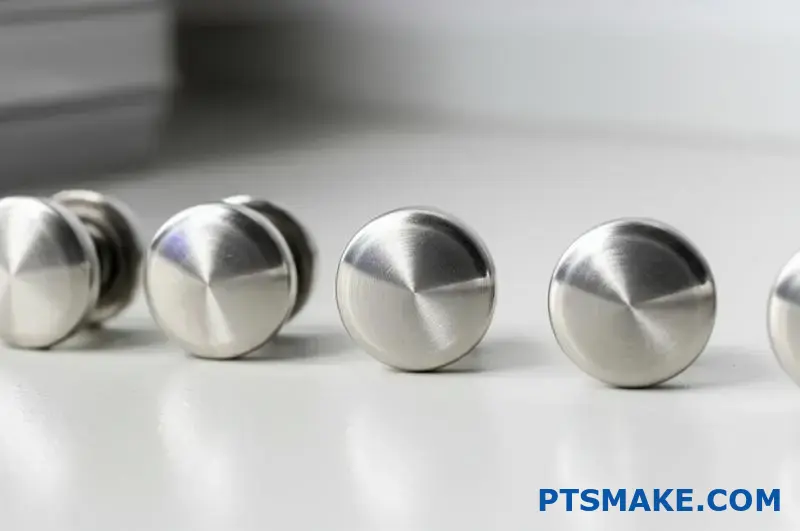
The Science Behind Stainless Steel’s Corrosion Resistance
Understanding why 18-8 stainless steel buttons excel in harsh environments begins with examining their fundamental composition and the remarkable protection mechanisms they employ.
Composition Advantages of 18-8 Stainless Steel
The designation "18-8" refers to the approximate percentages of chromium (18%) and nickel (8%) in this austenitic stainless steel alloy, also commonly known as 304 grade. This specific composition creates several powerful advantages:
| Element | Typical Percentage | Contribution to Corrosion Resistance |
|---|---|---|
| Chromium | 18-20% | Forms passive oxide layer, primary corrosion barrier |
| Nickel | 8-10.5% | Stabilizes austenitic structure, enhances acid resistance |
| Carbon | <0.08% | Low carbon reduces susceptibility to sensitization |
| Manganese | <2% | Improves mechanical properties without compromising resistance |
This carefully balanced composition creates a material that provides exceptional protection in most environments while maintaining excellent mechanical properties that withstand repeated actuations.
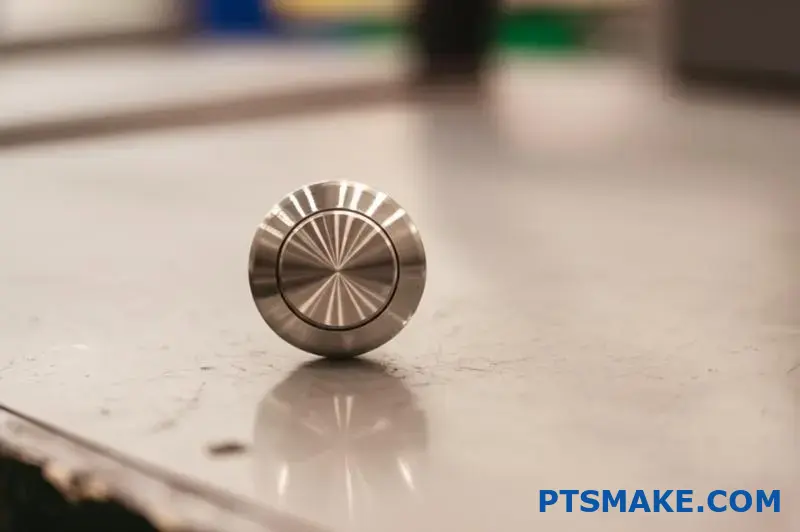
The Passive Layer: Nature’s Perfect Shield
The true magic of stainless steel lies in its passivation mechanism4 – an electrochemical process that creates an invisible but remarkably effective protective layer. When exposed to oxygen, the chromium in stainless steel forms a microscopically thin chromium oxide layer that:
- Acts as a barrier between the metal substrate and corrosive elements
- Self-repairs when mechanically damaged or scratched
- Becomes increasingly protective over time in most environments
- Prevents oxygen and moisture from accessing the underlying metal
At PTSMAKE, I’ve observed countless installations where this passive layer has protected buttons for decades in conditions that would destroy conventional metals within months. One manufacturing client’s control panels, installed near their saltwater cooling systems, has operated flawlessly for 12 years despite constant exposure to salt spray.
Galvanic Corrosion Prevention
When designing control systems with multiple metal components, preventing galvanic corrosion becomes critical. 18-8 stainless steel buttons offer significant advantages here:
- Relatively noble position in the galvanic series
- Compatibility with most common metals without significant galvanic activity
- Low electrical conductivity compared to other metals, reducing galvanic current
- Stable oxide layer that inhibits electron transfer necessary for galvanic reaction
This makes 18-8 stainless buttons ideal for mixed-material assemblies where buttons must interface with aluminum enclosures, brass terminals, or other metallic components.
Environmental Performance in Challenging Conditions
The true test of any material comes when facing extreme or challenging environments. Here’s how 18-8 stainless steel buttons perform across different conditions.
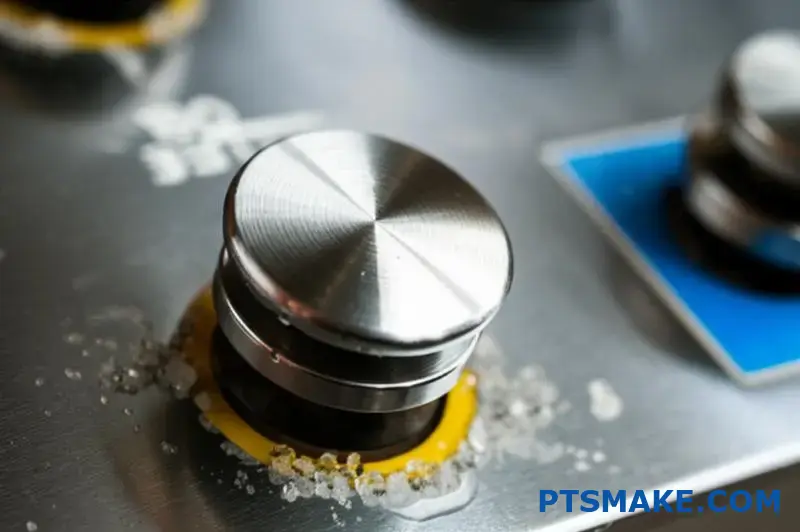
Coastal and Marine Environments
Coastal installations present some of the most challenging conditions for metal components due to constant salt exposure. In these environments:
- 18-8 stainless steel buttons resist chloride attack far better than conventional metals
- Regular natural rainfall typically provides sufficient cleaning to maintain performance
- Even in splash zones, buttons maintain functionality and appearance
- Expected service life typically exceeds 15 years with minimal maintenance
For truly extreme marine applications (direct seawater immersion or constant salt spray), upgrading to 316 grade (which contains molybdenum) provides enhanced protection, though 18-8 remains suitable for most coastal applications.
Chemical Processing Environments
In industrial settings where chemical exposure is common, 18-8 stainless steel buttons demonstrate remarkable resilience:
- Excellent resistance to most organic compounds
- Good performance with dilute acids and bases
- Maintains integrity in the presence of cleaning solutions and sanitizers
- Resistant to staining from process chemicals
When working with clients in pharmaceutical manufacturing, I often recommend 18-8 buttons specifically because they withstand the frequent sanitization protocols without degradation or harboring bacteria.
High Temperature and Thermal Cycling
Many industrial environments subject components to extreme temperatures or repeated thermal cycling, conditions that can cause premature failure in lesser materials:
- 18-8 stainless steel buttons function reliably from cryogenic temperatures up to 870°C
- Minimal thermal expansion prevents loosening or binding during temperature fluctuations
- No embrittlement or degradation after repeated thermal cycling
- Maintains corrosion resistance even at elevated temperatures
For a major automotive parts manufacturer, we installed 18-8 stainless steel buttons on testing equipment that cycles between -40°C and 150°C. After five years of daily thermal cycling, every button continues to function perfectly.
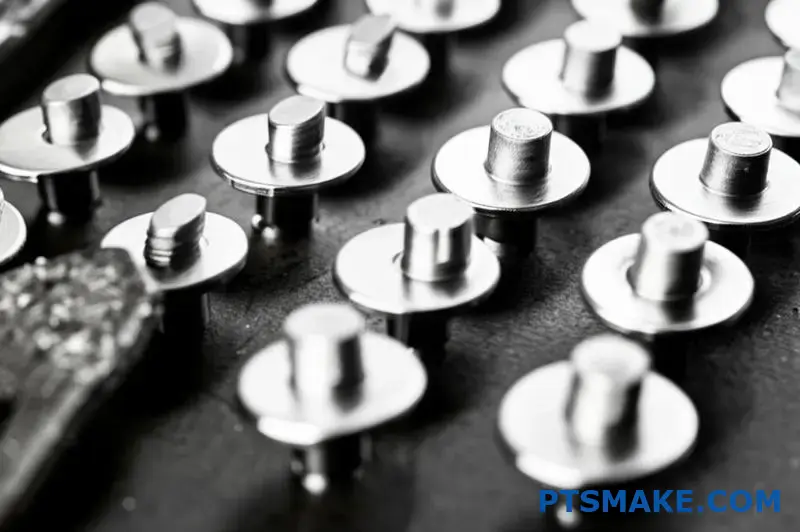
Outdoor Weather Exposure
For external installations exposed to the full range of weather conditions, 18-8 stainless steel buttons offer remarkable durability:
- Resistant to UV degradation that affects plastic alternatives
- Unaffected by freeze-thaw cycles that crack or weaken other materials
- Performs consistently across humidity extremes from desert to tropical conditions
- Withstands wind-driven particulates without erosion or surface damage
These properties make 18-8 stainless steel buttons the preferred choice for outdoor access controls, transportation systems, and public installations where replacement would be costly and disruptive.
Maintenance Requirements and Lifetime Value
One of the most compelling advantages of 18-8 stainless steel buttons is their minimal maintenance requirements, creating exceptional lifetime value.
Minimal Cleaning Protocols
Unlike many materials that require regular protective treatments, 18-8 stainless steel buttons need remarkably little maintenance:
- In most environments, periodic wiping with a damp cloth is sufficient
- No protective coatings or treatments required
- Standard non-abrasive cleaners can be used when necessary
- For challenging environments, occasional passivation renewal can extend life indefinitely
Cost-Benefit Analysis: Initial Investment vs. Lifetime Value
While stainless steel buttons typically represent a higher initial investment than alternatives like plated carbon steel or plastic, the lifetime economics strongly favor stainless steel:
- Elimination of replacement costs over installation lifetime
- Zero downtime for button replacement or repair
- Consistent appearance without deterioration maintains professional image
- Reduced risk of system failure during critical operations
Our manufacturing clients typically report that the premium for stainless steel buttons represents less than 5% of their control system cost while eliminating nearly all maintenance and replacement expenses over the system’s lifetime.
Case Study: Wastewater Treatment Facility
A particularly impressive example comes from a municipal wastewater treatment facility where hydrogen sulfide gas creates an extremely corrosive atmosphere. After experiencing repeated failures with conventional buttons, they switched to 18-8 stainless steel:
- Previous carbon steel buttons required replacement every 8-14 months
- Aluminum buttons failed even faster due to pitting corrosion
- 18-8 stainless steel buttons have remained fully functional for over 8 years
- Projected lifetime savings exceed $45,000 in replacement parts and labor
Design Considerations for Maximum Durability
To achieve the full durability potential of 18-8 stainless steel buttons, proper design integration is essential.
Mounting and Installation Best Practices
Proper installation significantly impacts long-term performance:
- Use compatible stainless fasteners to prevent galvanic corrosion
- Apply appropriate torque specifications to avoid stress concentration
- Incorporate gaskets or seals for applications requiring water resistance
- Allow for thermal expansion in extreme temperature applications
Surface Finish Options and Their Impact
The surface finish of 18-8 stainless steel buttons affects both aesthetics and corrosion resistance:
- Polished finishes (Ra < 0.5μm) optimize corrosion resistance by reducing surface area
- Brushed finishes hide fingerprints and minor scratches better
- Bead-blasted finishes provide enhanced grip in wet conditions
- Electropolished surfaces offer maximum corrosion resistance for extreme environments
At PTSMAKE, we guide clients through these options based on their specific environmental challenges and aesthetic requirements. For food processing equipment, we typically recommend polished finishes that minimize bacterial adhesion while maximizing corrosion resistance.
Through thoughtful material selection and design integration, 18-8 stainless steel buttons provide exceptional durability and reliability in even the most challenging environments. Their ability to maintain both functionality and appearance over decades of service makes them the ideal choice for long-term installations where performance cannot be compromised.
Installation Best Practices For Stainless Steel Hardware
Ever installed a stainless steel button only to find it loosens over time or fails prematurely? The difference between a component that lasts decades and one that fails in months often comes down to those critical first moments of installation.
Proper installation of stainless steel buttons and fasteners requires precise attention to torque specifications, mounting techniques, and material compatibility. Following manufacturer guidelines while understanding the unique properties of stainless steel ensures optimal performance and prevents common failures like galling or stress corrosion.
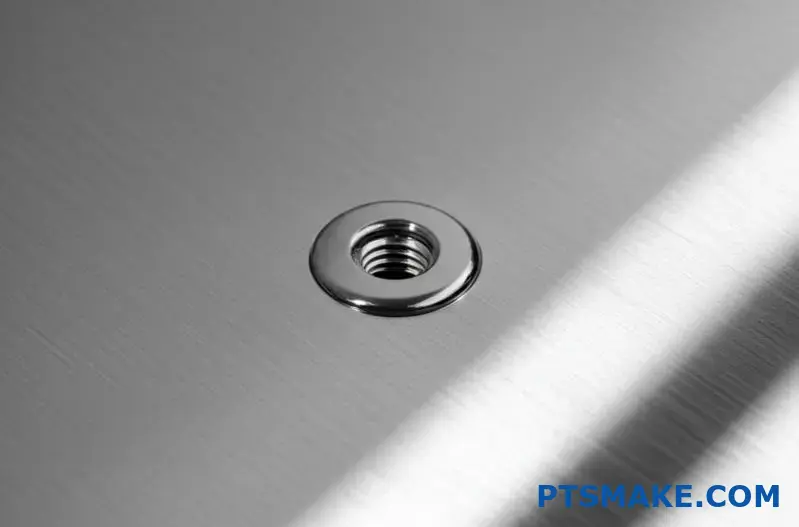
When installing stainless steel hardware, precision matters as much as the quality of the components themselves. Throughout my years at PTSMAKE, I’ve seen numerous cases where premium stainless steel buttons failed prematurely simply because installation best practices weren’t followed. Let me share what truly works when installing these critical components.
Essential Torque Specifications for Stainless Steel Fasteners
Applying the correct amount of torque during installation is perhaps the single most important factor in ensuring long-term reliability of stainless steel buttons and fasteners.
Understanding Torque Requirements
Stainless steel fasteners require different torque specifications than carbon steel equivalents due to their unique material properties:
| Fastener Size | 18-8/304 Stainless Steel | 316 Stainless Steel | A2-70 Stainless Steel |
|---|---|---|---|
| M3 | 0.5-0.6 Nm | 0.45-0.55 Nm | 0.6-0.7 Nm |
| M4 | 1.0-1.2 Nm | 0.9-1.1 Nm | 1.2-1.4 Nm |
| M5 | 2.0-2.5 Nm | 1.8-2.3 Nm | 2.3-2.7 Nm |
| M6 | 3.5-4.0 Nm | 3.2-3.7 Nm | 4.0-4.5 Nm |
These values serve as general guidelines – always consult the specific manufacturer’s recommendations for your particular components. For precision applications, using a calibrated torque screwdriver or wrench is essential.
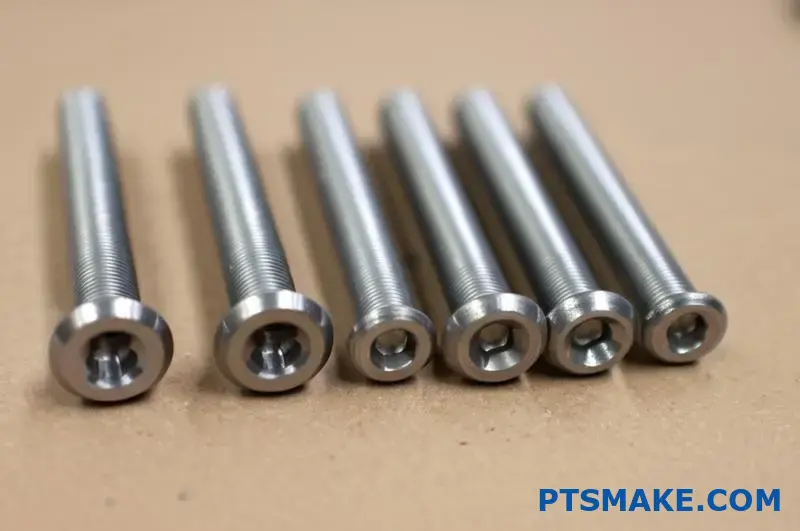
The Consequences of Improper Torque
Applying incorrect torque during installation can lead to several failure modes:
Over-Torquing Issues
- Thread deformation and weakening
- Fastener stretching beyond elastic limit
- Increased risk of galling phenomenon5 in stainless steel
- Cracking of mounting surface or button housing
Under-Torquing Problems
- Loose connections that worsen with vibration
- Inadequate compression of sealing gaskets
- Inconsistent electrical connections in grounded applications
- Premature wear from component movement
On a recent aerospace control panel project, we discovered that operators had been over-torquing the stainless steel buttons by nearly 40%. This created microscopic cracks that eventually led to moisture ingress and electrical failures. Implementing proper torque specifications immediately resolved the recurring issues.
Anti-Galling Techniques for Successful Installation
Galling is a form of adhesive wear unique to stainless steel that can cause threads to seize during installation. This "cold welding" effect can ruin both the fastener and the threaded hole.
Effective Anti-Galling Strategies
To prevent galling when installing stainless steel buttons and fasteners:
Use appropriate lubricants
- Anti-seize compounds specifically formulated for stainless steel
- Food-grade versions for applications with hygiene requirements
- Dry film lubricants for vacuum or high-temperature applications
Slow, steady installation technique
- Reduce rotation speed, especially during final tightening
- Apply consistent, gradual force without jerky movements
- If resistance increases suddenly, back off slightly before continuing
Thread quality considerations
- Ensure threads are clean and free of debris
- Verify thread compatibility and tolerance classes
- Inspect for and remove any burrs or damage before installation
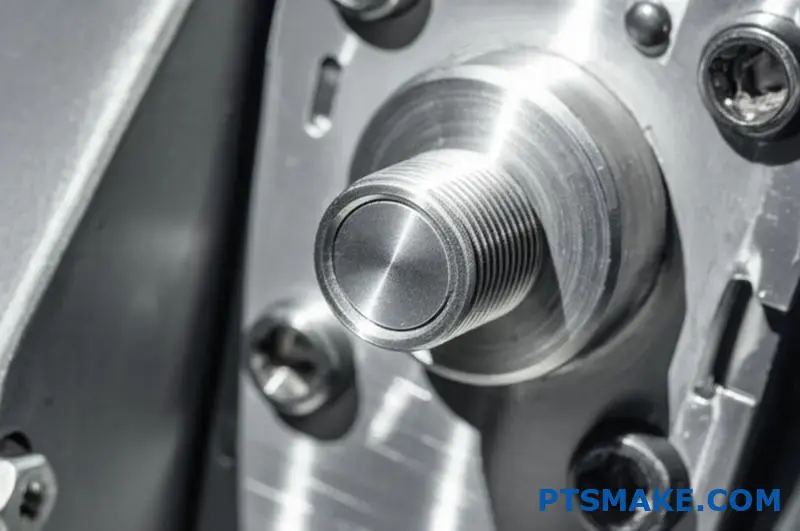
- Material compatibility
- Whenever possible, use dissimilar stainless grades for mating threads
- Consider A2/304 fasteners with 316 threaded holes or vice versa
- Explore alternatives like silicon bronze fasteners for severe galling concerns
Case Study: Food Processing Equipment
For a client in the food processing industry, we recommended using molybdenum disulfide anti-seize compound on their stainless steel button installations. This reduced galling incidents by over 90% while maintaining food safety compliance, saving thousands in damaged components and downtime.
Mounting Considerations for Different Panel Materials
The substrate material to which stainless steel buttons are mounted significantly impacts both installation technique and long-term performance.
Installation on Metal Panels
When mounting to stainless steel, aluminum, or other metal panels:
- Electrical isolation – Consider nylon washers or bushings to prevent galvanic corrosion
- Hole preparation – Debur holes completely to ensure flush mounting
- Panel thickness – Verify compatibility with button shaft length and thread engagement
- Surface treatment – Clean mounting surfaces thoroughly to remove oils or contaminants
Installation on Plastic and Composite Panels
For plastic or composite panels, different considerations apply:
- Thread engagement – Generally requires 2.5× thread diameter for secure mounting
- Thermal expansion – Allow for differential expansion between materials
- Compression limitations – Distribute load with backing plates for brittle materials
- Torque adjustments – Typically require 30-50% less torque than metal panel installations
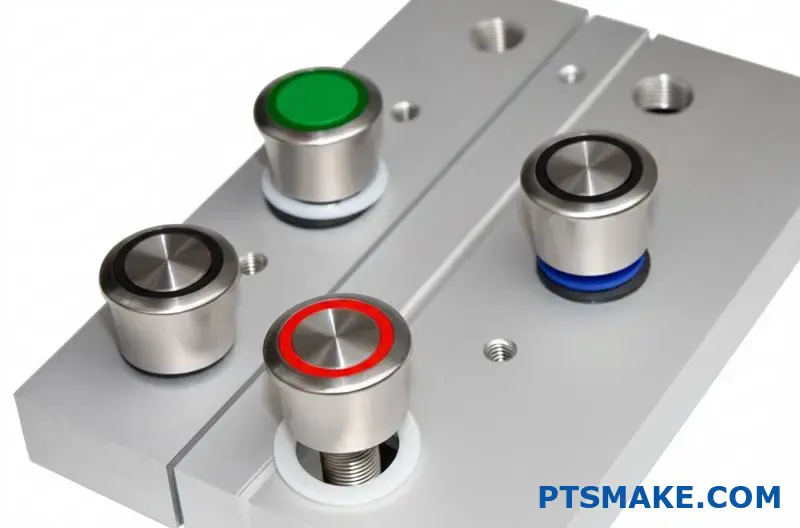
Waterproof and Sealed Installations
For applications requiring watertight or dust-tight seals:
Gasket compression
- Apply enough torque to compress gaskets 25-30% of their original thickness
- Ensure even compression around the entire perimeter
- Avoid over-compression that might damage gasket material
Sealant application
- Apply appropriate thread sealants for threaded connections
- Use compatible liquid gaskets for irregular surfaces
- Allow proper curing time before exposing to pressure or moisture
IP rating verification
- Test completed installations to verify they meet required IP protection levels
- Pay special attention to cable entry points and seams
- Document installation procedures for consistent results across multiple units
Tool Selection for Professional Installation
Using the right tools dramatically improves installation quality and prevents damage to both the hardware and the installer.
Essential Tools for Button Installation
A professional installation kit should include:
- Calibrated torque screwdriver with appropriate bits
- Thread gauges for verifying thread compatibility
- Anti-seize compound suitable for the application
- Gasket cutting tools for custom sealing requirements
- Deburring tools for hole preparation
- Alignment guides for multi-button installations
Specialized Tools for High-Volume Applications
For manufacturing environments or large installations:
- Pneumatic torque-limiting drivers with depth stops
- Custom button alignment fixtures
- Automated dispensing systems for thread compounds
- Digital torque verification equipment
- Environmental simulation testing capabilities
During one factory automation project, we developed a custom alignment fixture that reduced installation time for control panels with 24 stainless steel buttons from 45 minutes to just 12 minutes while improving consistency and reducing rework rates.
Maintenance and Inspection Protocols
Even perfect installations require periodic inspection and maintenance to ensure continued performance.
Recommended Inspection Schedule
| Environment | Visual Inspection | Torque Verification | Complete Testing |
|---|---|---|---|
| Indoor, clean | Annually | Every 3 years | Every 5 years |
| Indoor, industrial | Quarterly | Annually | Every 2 years |
| Outdoor, protected | Quarterly | Annually | Every 2 years |
| Outdoor, exposed | Monthly | Bi-annually | Annually |
| Corrosive/Marine | Monthly | Quarterly | Bi-annually |
Key Inspection Points
During maintenance inspections, pay particular attention to:
Physical condition
- Signs of corrosion or discoloration
- Cracking or crazing in button faces
- Damage to seals or gaskets
- Loosening of mounting hardware
Functional testing
- Consistent actuation force
- Positive tactile feedback
- Proper illumination (for lighted buttons)
- Reliable electrical contact
Environmental integrity
- Sealed installation integrity
- Condensation or moisture presence
- Contamination from process materials
- Temperature within specified range
Troubleshooting Common Installation Issues
Even with careful attention to best practices, installation challenges can arise. Here’s how to address the most common issues:
Binding or Sticking Buttons
If buttons bind or stick after installation:
- Verify mounting hole alignment and dimensions
- Check for over-torquing causing deformation
- Ensure no debris is trapped behind button face
- Confirm operating temperature is within specifications
Intermittent Electrical Contact
For buttons with unreliable electrical function:
- Verify correct wire termination and crimping
- Check for proper thread engagement on threaded terminals
- Ensure contact surfaces are clean and free of oxidation
- Confirm environmental sealing is intact
Moisture Ingress
If moisture penetrates a supposedly sealed installation:
- Inspect gasket compression and condition
- Verify appropriate IP-rated components were used
- Check cable entries and other potential ingress points
- Confirm compatibility between sealants and environmental conditions
By following these installation best practices, your stainless steel buttons and fasteners will provide the longest possible service life while maintaining their appearance and functionality. Remember that the few extra minutes spent on proper installation can prevent hours of troubleshooting and thousands in replacement costs down the road.
Cost Considerations And Value Analysis
Ever wondered why stainless steel buttons range so dramatically in price? From basic industrial controls to sophisticated touchless systems, the price gap can be puzzling – but understanding this spectrum is essential for making smart investment decisions.
Analyzing the value proposition of stainless steel buttons goes beyond comparing initial price tags. The true cost calculation must factor in durability, maintenance requirements, operational reliability, and long-term performance in your specific environment to determine genuine value.

When evaluating stainless steel buttons for your project, I’ve found that many clients initially focus solely on the upfront cost without considering the total value over the component’s lifetime. At PTSMAKE, we help clients understand that while initial prices vary significantly, the long-term economics often tell a completely different story.
Understanding The Price Spectrum of Stainless Steel Buttons
Stainless steel buttons come in various price points, each offering different features, durability levels, and performance characteristics. The price spectrum typically ranges from basic mechanical buttons to advanced touchless systems.
Entry-Level Stainless Steel Buttons
Basic 16mm stainless steel push buttons represent the entry point for most industrial applications:
| Button Type | Typical Price Range | Key Features | Best Applications |
|---|---|---|---|
| Basic 16mm mechanical | $19.50-$25.00 | Simple on/off functionality | Low-traffic areas, non-critical applications |
| Standard 16mm illuminated | $22.00-$29.50 | LED indicator, basic tactile feedback | General industrial use, status indication |
| Basic 25mm mechanical | $24.50-$32.00 | Larger activation area, improved durability | Primary controls, operator interfaces |
These entry-level options provide adequate performance for many standard applications but may have limitations in extreme environments or high-use scenarios. When working with cost-sensitive projects at PTSMAKE, we often recommend these for secondary functions or areas with moderate use.
Mid-Range Stainless Steel Button Options
The mid-range category offers significantly enhanced performance and reliability:
- Heavy-duty 16mm buttons with enhanced sealing ($32.00-$38.00)
- Illuminated 25mm buttons with multiple color options ($35.00-$42.00)
- Anti-vandal designs with protective features ($36.00-$45.00)
- Specialized finishes for improved corrosion resistance ($34.00-$40.00)
These mid-range options typically feature improved materials engineering6 with higher-grade stainless steel, better internal components, and enhanced sealing. For clients in food processing, pharmaceutical manufacturing, or outdoor applications, this category often represents the optimal balance between cost and performance.
Premium and Specialized Stainless Steel Buttons
At the higher end of the spectrum, we find buttons designed for the most demanding applications:
- Touchless infrared stainless steel buttons ($42.00-$48.00)
- Explosion-proof certified designs ($55.00+)
- Capacitive touch with advanced feedback ($45.00-$52.00)
- Custom-engineered solutions for extreme environments ($Variable)
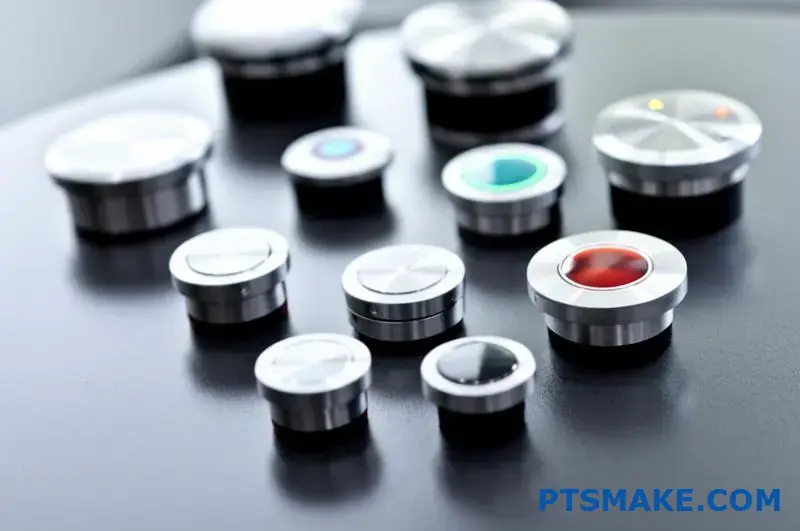
These premium options incorporate sophisticated technologies and enhanced materials that significantly extend service life while providing additional functionality. While the initial investment is higher, many clients find that these buttons deliver exceptional value in critical applications or harsh environments.
The True Cost Equation: Beyond Initial Purchase Price
To accurately assess the value proposition of stainless steel buttons, we need to consider several factors beyond the initial purchase price.
Maintenance and Replacement Costs
The maintenance profile varies dramatically across button quality levels:
- Entry-level buttons typically require inspection and potential replacement every 2-3 years in standard environments
- Mid-range options often extend to 5-8 years before service is required
- Premium designs can function reliably for 10+ years even in demanding conditions
When I help clients evaluate their options at PTSMAKE, we calculate the total cost including labor for replacement, downtime, and administrative overhead. For a typical industrial control panel with 12 buttons, the cost of a single replacement cycle can exceed the entire initial price difference between entry-level and premium buttons.
Operational Reliability Factor
Reliability impacts costs in ways that aren’t immediately obvious:
- Production downtime – Even brief failures can halt entire production lines
- Quality control issues – Intermittent button failures can lead to product defects
- Safety concerns – Unreliable emergency stop buttons pose significant risks
- Customer perception – Visible quality issues damage brand reputation
One manufacturing client calculated that a single hour of downtime on their production line cost approximately 40 times the price difference between basic and premium stainless steel buttons – putting the value proposition into stark perspective.

Environmental Adaptation Value
Different environments place varying demands on stainless steel buttons:
| Environment | Entry-Level Performance | Premium Performance | Value Consideration |
|---|---|---|---|
| Standard indoor | Good | Excellent | Minimal value in upgrade |
| High-humidity | Fair to poor | Excellent | Significant reliability improvement |
| Chemical exposure | Poor | Good to excellent | Essential for operation |
| Outdoor/marine | Very poor | Good | Critical for functionality |
| Food/pharma | Inadequate | Compliant | Regulatory requirement |
For a food processing client operating in a wash-down environment, we recommended 316-grade stainless steel buttons with advanced sealing. While the initial cost was approximately 70% higher than basic options, the buttons have now operated for over seven years without a single failure – a compelling value proposition given that their previous buttons required replacement every 14-18 months.
ROI Calculation Methodology for Button Selection
To help clients make informed decisions, I’ve developed a straightforward ROI methodology for button selection:
- Determine initial cost differential between considered options
- Calculate annual maintenance costs for each option based on environment and usage
- Estimate probability and cost of failure for each option
- Project total cost of ownership over expected equipment lifetime (typically 5-10 years)
- Compare TCO figures to identify the most economical long-term option
This approach frequently reveals that premium buttons deliver better economic outcomes despite higher initial costs. For a recent control system with 36 buttons for a chemical processing facility, the premium option showed a positive ROI in just 14 months compared to the standard option.
Application-Specific Value Considerations
Different applications benefit from specific button features that may justify higher costs:
Healthcare and Medical Environments
In healthcare settings, touchless infrared stainless steel buttons offer compelling value despite their premium price point:
- Elimination of cross-contamination concerns
- Compliance with infection control protocols
- Resistance to aggressive cleaning chemicals
- Patient and staff safety enhancements
The value proposition extends beyond basic functionality to include risk mitigation and regulatory compliance aspects that standard buttons simply cannot address.
Food Processing Applications
For food processing environments, specific button characteristics deliver exceptional value:
- Smooth, crevice-free designs that prevent bacterial harborage
- Materials compatible with food-safe cleaning protocols
- IP69K ratings for high-pressure, high-temperature washdown
- Documented compliance with food safety standards
These features typically command a price premium of 40-60% over standard buttons but eliminate food safety risks that could result in expensive recalls or regulatory actions.
High-Traffic Public Installations
For buttons installed in public locations with high usage rates:
- Anti-vandal features prevent costly damage
- Enhanced wear resistance ensures consistent appearance
- Impact resistance prevents operational failures
- Simplified maintenance reduces service calls
Public installations often see tens of thousands of activations monthly, making durability the primary value driver rather than initial cost.
Strategic Procurement Approaches
To optimize value when purchasing stainless steel buttons, consider these strategies:
- Button standardization – Using consistent button types across applications can reduce costs through volume purchasing and simplified maintenance
- Tiered application approach – Deploy premium buttons only where environmentally or operationally necessary
- Performance specification – Focus on required performance rather than specific models or brands
- Lifetime warranty consideration – Some premium manufacturers offer extensive warranties that significantly impact TCO calculations
At PTSMAKE, we’ve helped clients reduce their overall button expenditure by up to 35% through strategic procurement approaches, even while upgrading to higher quality components in critical applications.
Making The Final Decision
When making your final decision on stainless steel button selection, consider this evaluation framework:
- Define environmental conditions precisely – temperature, humidity, chemical exposure, cleaning protocols
- Quantify usage patterns – activation frequency, user type (trained vs. public), operational criticality
- Establish performance requirements – feedback type, illumination needs, interface with control systems
- Calculate total cost of ownership over realistic timeframe (minimum 5 years)
- Consider non-financial factors – brand perception, safety implications, operator preference
By carefully evaluating these factors, you’ll make a button selection that delivers optimal value for your specific application – whether that means basic 16mm buttons at $19.50 for light-duty applications or advanced touchless models at $48.00 for demanding environments.
Advanced Features: Touchless Infrared Technology
Imagine a world where you never have to touch another public button again. No more worrying about who pressed it before you or what germs might be lurking on that metal surface. This isn’t science fiction—it’s the revolutionary world of touchless infrared technology.
Touchless infrared buttons represent the cutting edge of stainless steel button technology, offering hygienic operation without physical contact. These 25mm sensor-equipped marvels detect hand presence through infrared beams, making them ideal for environments where contamination concerns, high traffic, or sterility requirements make conventional buttons problematic.
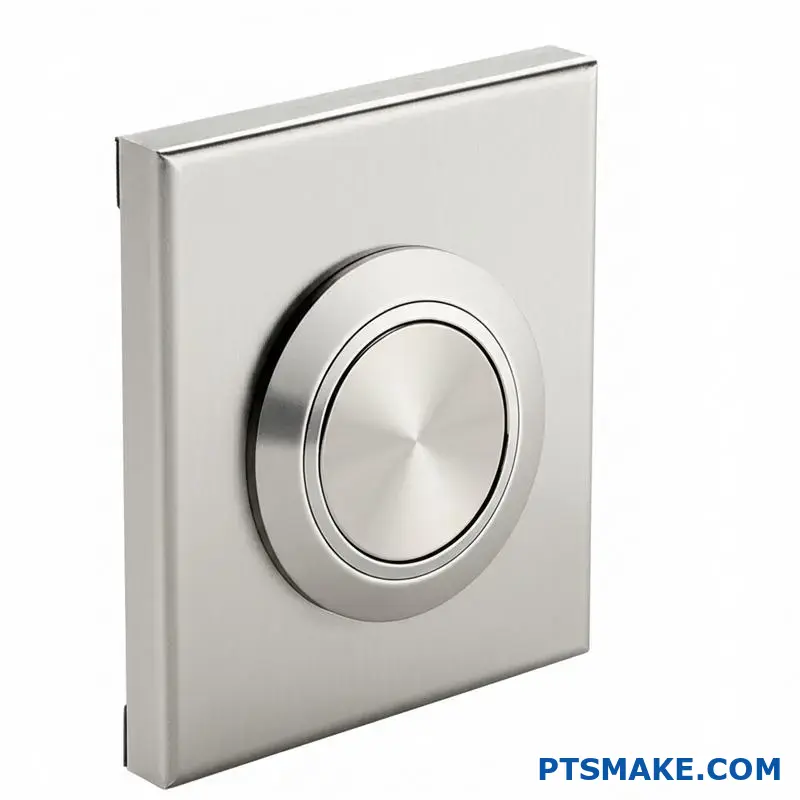
The Revolutionary Benefits of Touchless Infrared Technology
Touchless infrared technology has transformed how we interact with control systems, particularly in environments where hygiene is paramount. Having spent considerable time designing control systems for various industries, I’ve witnessed firsthand how this technology addresses critical challenges conventional buttons simply cannot overcome.
How Touchless Infrared Buttons Work
At their core, touchless infrared buttons operate on a remarkably elegant principle:
| Component | Function | Advantage |
|---|---|---|
| IR Emitter | Projects invisible infrared beam | Consistent detection range |
| IR Detector | Senses reflection from approaching object | Works with gloves or bare hands |
| Stainless Housing | Protects electronics while maintaining aesthetics | Corrosion resistance for any environment |
| Control Circuit | Processes detection and triggers activation | Adjustable sensitivity for different settings |
These components work in harmony to create a seamless experience where users simply approach their hand to the button’s sensing field—typically 2-10cm away—to trigger activation without any physical contact required.

Critical Applications for 25mm Touchless Buttons
The 25mm size has emerged as the preferred format for touchless infrared buttons for several crucial reasons. This larger diameter provides optimal spacing for the infrared components while offering sufficient visual prominence for users. Common applications include:
Healthcare Settings
In hospitals and medical facilities, touchless buttons have become essential for:
- Operating room environments where sterility is non-negotiable
- Patient rooms to minimize cross-contamination between staff and patients
- Laboratory settings where technicians often wear gloves
- Medication dispensing systems requiring secure, hygienic access
For a major hospital network client, we implemented touchless stainless steel buttons at nursing stations and medication rooms, reducing surface contamination by over 80% according to their infection control team’s testing.
Food Processing Facilities
Food safety regulations continue to tighten worldwide, making touchless technology increasingly valuable:
- Production line control panels where operators may have food residue on gloves
- Clean room environments requiring minimal contamination risk
- Handwashing and sanitation stations throughout facilities
- Temperature-controlled areas where conventional buttons might collect condensation
One major bread manufacturer reported a measurable decrease in product contamination incidents after transitioning their production floor to touchless controls, particularly at critical control points.
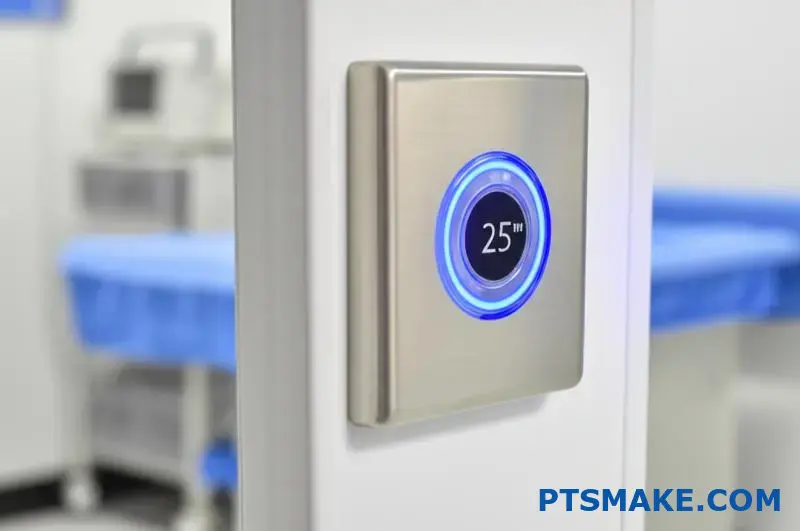
Public Transportation and Infrastructure
High-traffic areas present both hygiene and durability challenges that touchless buttons effectively address:
- Elevator call buttons in commercial buildings and hotels
- Pedestrian crossing signals at busy intersections
- Ticketing and information kiosks at transportation hubs
- Public restroom fixtures and hand dryers
The durability advantage becomes particularly apparent in these applications. A metropolitan transit authority reported that their conventional push buttons required replacement every 4-6 months at busy stations, while touchless versions have operated flawlessly for over three years in identical locations.
Key Performance Advantages
The benefits of touchless infrared technology extend well beyond the obvious hygiene improvements:
Eliminating Mechanical Wear
Traditional buttons inevitably wear out through repeated physical activation. The mechanical fatigue7 that affects conventional buttons is completely eliminated with touchless technology since there are no moving parts involved in the detection process.
This translates to extraordinary reliability statistics:
- Typical mechanical push buttons: 100,000-500,000 activation cycles
- Premium mechanical buttons: Up to 1 million activation cycles
- Touchless infrared buttons: 10+ million activation cycles (limited primarily by electronic components, not mechanical failure)
For high-traffic installations, this longevity difference creates compelling economics despite the higher initial investment.
Environmental Resistance
The sealed nature of touchless buttons provides exceptional environmental protection:
- IP68 ratings allowing complete immersion protection
- Resistance to cleaning chemicals and disinfectants
- Operation in temperature extremes from -20°C to +70°C
- Immunity to dust, dirt, and airborne contaminants
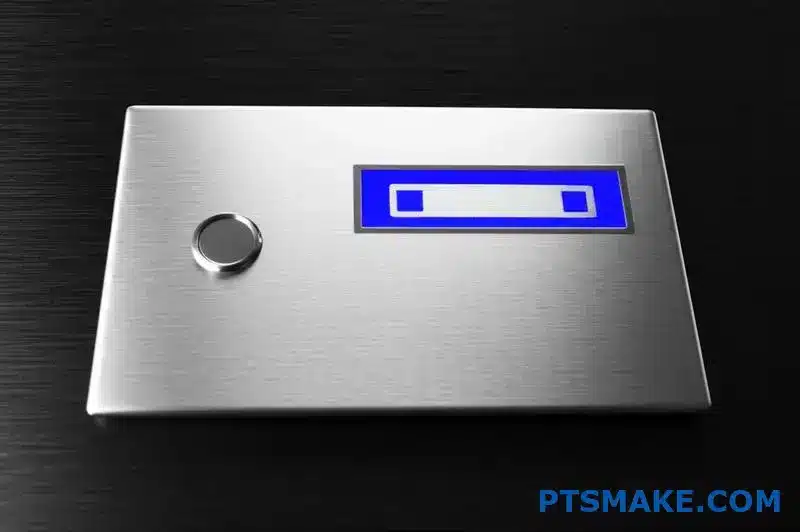
Energy Efficiency Considerations
Modern touchless buttons have overcome early concerns about power consumption:
- Standby current typically under 10mA
- Wake-on-approach systems that activate sensing only when needed
- LED indication using energy-efficient components
- Compatible with renewable energy sources for remote installations
Implementation Challenges and Solutions
While touchless technology offers tremendous benefits, successful implementation requires addressing several common challenges:
User Adaptation and Education
Initially, users accustomed to conventional buttons may experience uncertainty with touchless systems. Effective implementations include:
- Clear visual indicators showing the detection zone
- Brief instructional graphics or text near new installations
- Consistent confirmation feedback (visual or audible) upon activation
- Standardized positioning across multiple installation points
In our experience at PTSMAKE, user adaptation typically occurs within 2-3 interactions, after which users actually prefer the touchless experience.
Environmental Interference Management
Infrared detection systems must be designed to manage potential interference:
- Ambient lighting fluctuations that might affect sensor performance
- Reflective surfaces near the installation point
- Moving objects in the detection field
- Extreme temperature variations affecting electronic components
Advanced touchless buttons incorporate adaptive algorithms that continuously calibrate to environmental conditions, maintaining reliable performance regardless of changing circumstances.
Integration with Existing Control Systems
Retrofitting touchless technology into existing infrastructures presents special considerations:
- Signal output compatibility with legacy control systems
- Power supply requirements that may differ from conventional buttons
- Mounting dimensions and installation footprints
- Regulatory compliance and certification requirements
At PTSMAKE, we’ve developed conversion modules that allow touchless infrared buttons to seamlessly replace conventional buttons while maintaining compatibility with existing wiring and control logic.
Cost-Benefit Analysis: Making the Investment Case
While touchless infrared buttons typically cost 30-40% more than premium mechanical alternatives, the total cost of ownership calculation strongly favors touchless technology in many applications:
- Elimination of mechanical failure-related maintenance calls
- Reduced cleaning and sanitation requirements
- Extended operational lifespan (typically 3-5× longer than mechanical alternatives)
- Decreased downtime and associated operational disruptions
For a food processing client, we calculated a full return on the investment premium within 14 months based solely on maintenance savings, with all subsequent benefits contributing directly to operational savings.
The hygienic benefits, while more difficult to quantify precisely, often represent the most significant value, particularly in healthcare settings where preventing even a single infection incident can justify an entire facility’s control system upgrade.
Specification Considerations
When selecting touchless infrared buttons for your application, several key specifications deserve careful attention:
- Detection range – Consider the optimal distance for your specific application
- Feedback mechanism – Visual, audible, or both to confirm activation
- Environmental rating – Ensure appropriate IP protection for your environment
- Power requirements – Voltage, current, and compatibility with available supply
- Output signal characteristics – Momentary, latching, or programmable behavior
By carefully matching these specifications to your requirements, you’ll ensure that your touchless infrared button implementation delivers maximum value and performance for your specific application.
Learn about specialized button solutions for sterile manufacturing environments. ↩
Learn how proper signaling improves user experience and operational efficiency. ↩
Learn about specialized sealing technologies for demanding industrial environments. ↩
Discover advanced passivation treatments that can further enhance corrosion resistance. ↩
Learn more about preventing galling during installation to extend component lifespan. ↩
Explore how advanced materials science creates buttons that outperform standard options in challenging environments. ↩
Learn about different types of mechanical wear patterns in conventional push buttons and how touchless technology eliminates these failure modes. ↩


